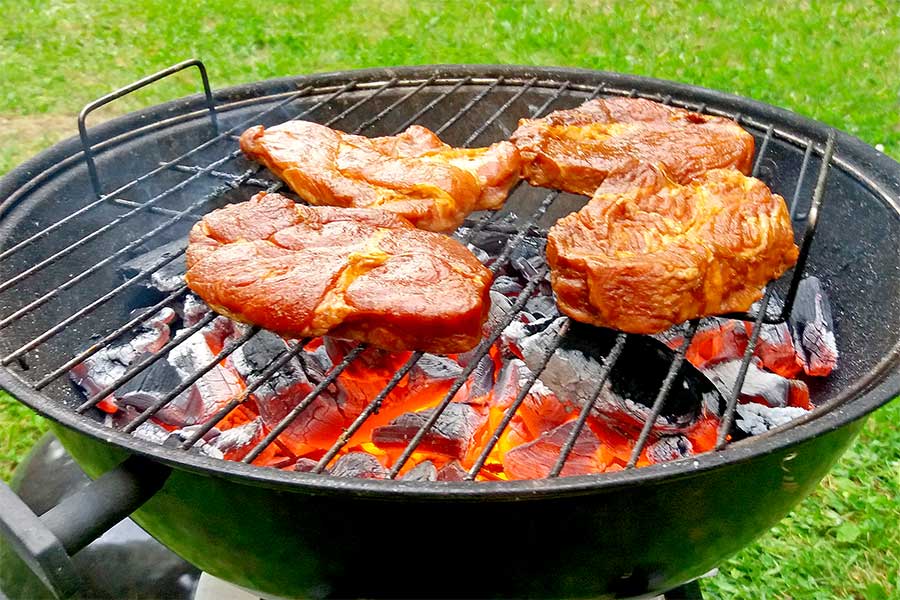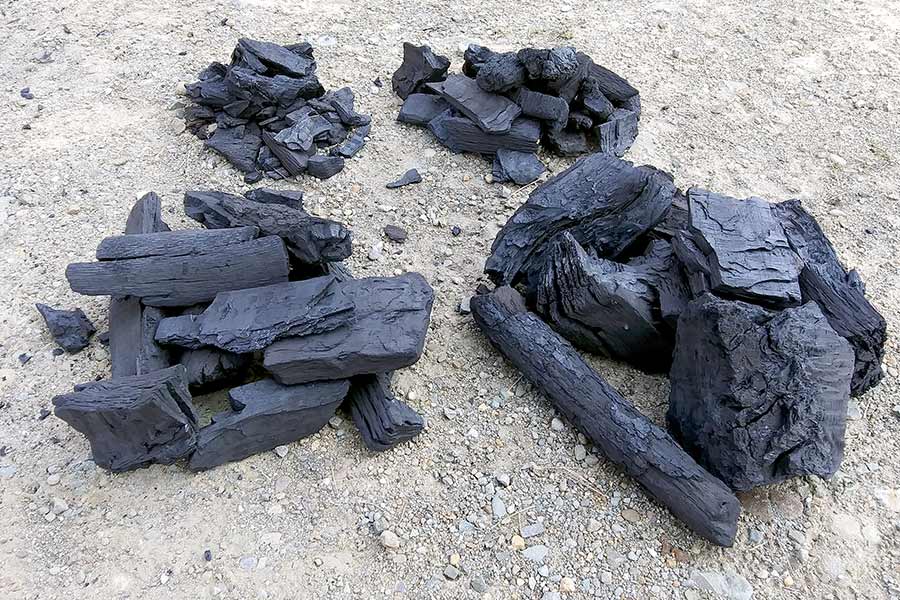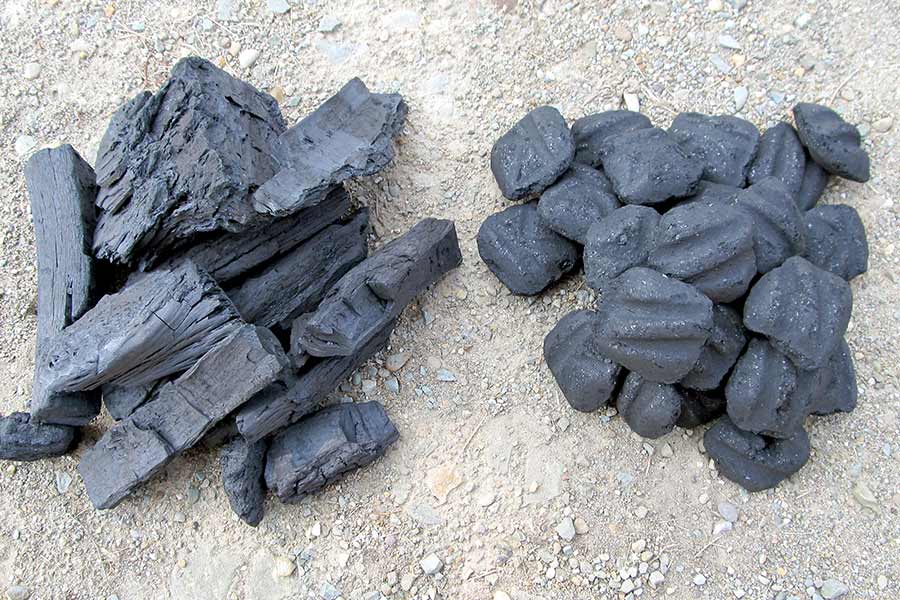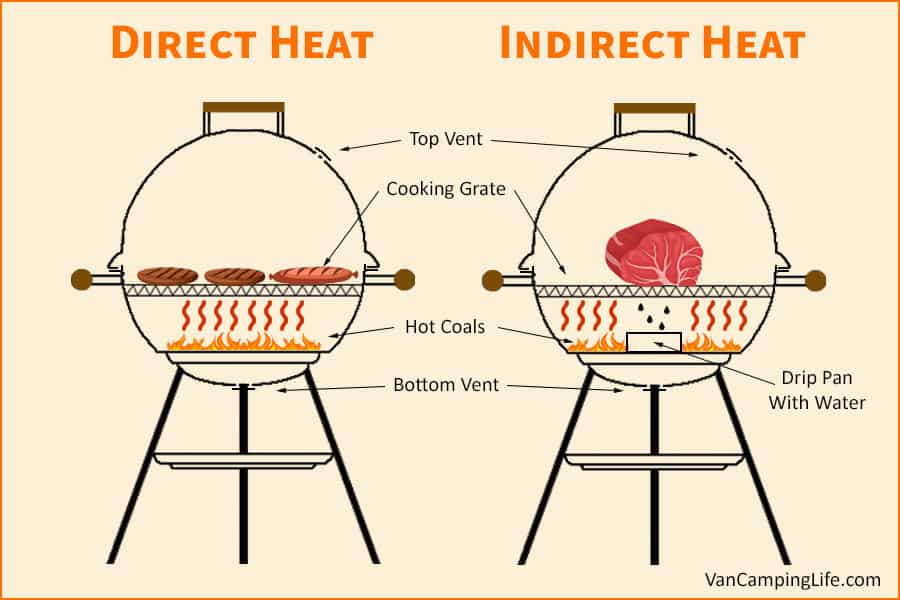
Lump charcoal is undoubtedly a good option for grilling due to its characteristics, such as its ability to light quickly, burn hotter with less ash, and because it is 100 percent all-natural. However, for some backyard grillers, these characteristics are counteracted by its increased cost.
Several factors can contribute to the higher cost of lump charcoal. Lump charcoal is labor-intensive to produce, has higher raw material costs, is an all-natural product containing no additives, and may have limited availability in certain areas.
Although the majority of barbecue enthusiasts use charcoal briquettes, lump charcoal is gaining in popularity with many seasoned grillers due to its characteristics mentioned above.
Lump charcoal is available in various natural hardwoods such as maple, oak, hickory, and mesquite, to name a few. Many backyard grillers are willing to pay the extra cost because they believe it imparts food with a trace of that natural woodsy flavor.
Continue reading for a quick overview of the charring process, lump charcoal pros and cons, tips on choosing, starting, and storing lump charcoal—also, common cooking zones for direct and indirect heat. In addition, a brief look at the kettle, barrel, and ceramic grills, and my pick for each style.
How is Lump Charcoal Produced?
When making lump charcoal, whether you are a backyard charcoal DIYer or a large brand name manufacturer, the goal is to remove the wood’s oxygen and hydrogen and leave just the carbon.
The process begins by burning or heating hardwood pieces at a high temperature with a minimum amount of oxygen present, whether in a small 55-gallon drum or a large commercial kiln.
During the charring stage, the opening and closing of air intake and exhaust vents helps maintain the temperature and control the process. The temperature in the container must surpass 500 degrees Fahrenheit.
The high heat releases the volatile organic compounds, which may take from hours to days, depending on the container’s size, and when finished, the result is natural hardwood lump charcoal.
Lump Charcoal Pros and Cons
Pros
- All-natural 100 percent hardwood
- No additives, fillers, or binders
- Easy to ignite
- Hotter burning
- Produces a small amount of ash
Cons
- More expensive
- Pieces are not uniform in size
- The temperature could become too high
- Small charcoal crumbs and dust
- May be hard to find
What to Look for When Purchasing Lump Charcoal
As mentioned earlier various hardwoods like maple, oak, hickory, mesquite, and fruit woods are popular wood species for lump charcoal. The majority of the wood is from sawmills in the form of slabs (the rounded portion of the log that’s cut off, leaving a flat-sided cant ready to saw into lumber.)
Depending on the manufacturer, they may also use pieces of kiln-dried construction lumber, flooring and furniture scraps, etc. Some companies have built their reputation on using only big chunks of natural hardwood to produce their charcoal.
There are many manufacturers of lump hardwood charcoal, and they all differ slightly. Here are some things to consider when purchasing lump charcoal.
When purchasing, look for these terms on the bag:
- 100% natural lump charcoal with no additives or fillers
- Premium hardwood lump charcoal
- Super-premium lump charcoal
- 100% pure competition blend
Most charcoal gets a visual inspection to remove any stones, foreign objects, and any un-carbonized wood. Nonetheless, occasionally you might find a small stone in the bag, especially if the company uses sawmill slabs.
The mill straps the slabs together in large bundles for transport, and a stone occasionally gets bundled in. However, the charcoal is still perfectly fine to use.
I personally don’t want to find charcoal that looks like plywood, has nail holes in it (could be old pallets), milled lumber (may have been pressure-treated or had some coating applied), or any foreign objects.
Size of the Charcoal Pieces

Lump charcoal will vary in look and size depending on the quality, source, and wood species. In general, larger pieces are more desirable as they burn longer. Some bags may have just a few large chunks, and the rest is small and medium-sized pieces and crumbs.
After you try out a couple of different manufacturers, you will quickly zero-in on a favorite. A good mix would be a bag with medium to larger pieces of a consistent size.
If you purchase a bag with varying sizes of small, medium, and larger charcoal pieces, that’s alright. The small pieces ignite fast and get hotter fast; they in turn, will ignite the medium pieces and then the larger pieces, which will give a longer burn time.
However, it would be best to control the charcoal’s airflow via the grill’s adjustable air vents, or the temperature may get too high, with some charcoals up to 1,000+ degrees. Depending on the food you’re preparing, that could be a help or a hazard.
- Cowboy produces a 100% natural lump charcoal that lights easily and works in all outdoor cooking appliances.
- B&B lump charcoal comes in uniform pieces ideal for grilling meat and using in smokers.
- Royal Oak is made from Hickory and American Oak and is perfect for cooking at high and low temperatures.
These are the three top-rated companies that make 100% natural lump charcoal. There are many more quality brands available; the best rule of thumb is to try out some different ones until you find what works best for you.
Best Way to Ignite Lump Charcoal
There are various methods to start charcoal; some better than others, charcoal lighter fluid (however some people believe it may affect the food’s taste), propane torch, electric charcoal starter, or use a manufactured all-natural proprietary charcoal starter, like starter sticks, cubes or squares.
I like to use a charcoal chimney; the procedure is simple and straight forward.
- Crumble up some newspaper and place it under the chimney, be sure not to overpack it.
- Pour the lump charcoal into the chimney; if a piece is too large to fit, break it smaller.
- Light the newspaper and wait.
Within 15-20 minutes, you will see the flames coming out of the top of the chimney and the embers glowing and turning whitish. The charcoal is now ready to begin using.
Different companies make chimney starters; this one from Weber works like a charm. I like the large shield that protects the handle from getting too hot, and the two-handle design makes it easier to dump the charcoal after you have it started. It quickly gets your charcoal going without having to use fluids to get the charcoal started.
Other Posts of Interest
- What is Van Camping?
- How to Sleep In A Transit Van: Everything You Will Need
- Review: Are Quick Dry Travel Towels Any Good?
- Why Are Camping Lights Red?
How to Store Lump Charcoal
The storage life of lump charcoal is practically indefinite if it is stored properly. Store your excess lump charcoal in a cool, dry place out of direct sunlight.
A garage, basement, or small shed would be okay as long as it doesn’t have a lot of humidity. I keep our bags in a garage on a couple of 2x4s to keep them up off the concrete floor. For winter storage, I fold the top of open bags over a couple of times and keep them shut with a couple of heavy-duty spring clamps.
Another great option would be to place the charcoal in a metal or plastic container with a tight-fitting lid. A low-cost trash can would be ideal, or you could purchase a 6-gallon bucket and cover at a local retailer or big-box store. The main goal is to keep the charcoal from getting damp or wet.
Lump Charcoal vs. Briquettes

The debate over lump charcoal vs. briquettes will probably go on indefinitely with steadfast supporters on both sides. But the one thing both sides can agree on is that there are advantages and disadvantages to each.
For me, I like them both and use them both. Lump charcoal produces excellent heat, perfect for when I want to sear and brown the food. I use the briquettes when cooking with the camp dutch oven; the uniform size and even heat works perfectly every time.
Direct Heat vs. Indirect Heat and Coal Arrangement
Direct heat is just what it sounds like, cooking the food quickly and directly over the hot charcoal and flames. With indirect heat, the food is placed away from direct contact with the flame, allowing for a lower cooking temperature over a more extended period.
Various coal arrangements can deliver direct and indirect heat to your grill through zones, directly affecting the heat transmitted to the food. There are several coal arrangements the expert grill masters use when grilling; below are three of the more typical coal configurations.
- Direct Heat – the coals are spread in an even layer across the grill grate, usually used for foods that cook quickly; thin cuts of meat, burgers, vegetables, and seafood.
- Two-Zone Heat – The coals are placed on one side of the grill for direct high heat cooking, and the other side is left empty. The empty side creates an indirect cooking zone. Two-zone fire is the most versatile coal arrangement.
- Split Two-Zone Heat – The coals are place on both sides of the grill, and the middle is left empty. A foil pan filled halfway with water is placed between the coals to help control the temperature and add moisture to the food.

It’s important to arrange your coals to maintain a constant temperature without a lot of fluctuations; this requires some practice. As mentioned earlier, airflow will affect the temperature, as well as opening the grill frequently, food placed too closely together, and colder weather.
The Grill Types
The majority of charcoal grills purchased generally fall into three major types, all of which will work well with lump charcoal. The following are the types with a short description.
Kettle Grill
This grill type is top-rated and a favorite with many backyard grilling enthusiasts. Available in various sizes, they are the least expensive and most portable of the grill types. The kettle’s shape is designed to retain and distribute the heat very evenly.
One of the most popular kettle grills is the Weber Original Kettle Grill. This grill makes cooking easy by allowing you to adjust the dampers to get the right temperature for cooking steaks, burgers, or whatever you happen to be grilling. You also won’t have to wonder how hot it is; you will be able to tell by the thermometer on the lid.
The grill lid has a hook so that you can quickly hook it over the side of the grill, no more holding it or looking for a place to set it. Plus, there are hooks to hang your flipper or your sauce brush on, so they are handy when you need them.
Another handy feature, you can add extra charcoal while you are grilling by merely folding the grate out of the way.
And cleanup is simple. Just brush the leftover charcoal into the ash catcher, remove it and dispose of the debris. The Weber kettle grill makes grilling fun and easy.
Portable camping grill – Are you looking for a lightweight, portable kettle grill that you can take along when you go camping? The Smokey Joe 14″ portable grill from Weber is a perfect choice.
It weighs in at only 9 1/2 pounds, it is rust-resistant, has a porcelain-enameled lid and bottom, and vents to adjust the cooking temperature.
This grill works great for camping, tailgating, or cooking for one or two people. Assembly and cleanup are easy. It provides good value for a low cost.
Barrel Grill
These grills look like a barrel lying on its side, hence the name, but they are more costly and less portable than the kettles. The barrel grill has a larger cooking area than most kettle grills, and the shape is well suited for long slow cooking and smoking.
The Char-Griller Outlaw BBQ Grill is an excellent choice when looking for a barrel grill to load up with burgers at your next backyard party.
The grill provides 725 square inches of grilling area, giving you room to cook enough burgers for everyone. The grill has cast iron cooking grates, dampers to control cooking temperature, a warming rack to toast the buns, hooks for your spatula, a temperature gauge, and an ash pan for easy cleanup.
It is constructed from heavy-duty, powder-coated steel to give you many years of service, plus it also has front and side shelves to set plates and BBQ sauce on. Order yours today, so you are ready for your next backyard gathering.
Ceramic Grill
These grills usually have a distinctive egg shape and typically are the most expensive of the three types. Also called a kamado, these grills heat up quickly and have excellent heat retention, thanks to the ceramic material. They are well suited for grilling, smoking, slow cooking, and steaming. They can cook a variety of foods, including bread, pies, and even pizza.
Manufactured from the best grade of ceramics, this kamado from Pit Boss® will make your next backyard feast a success. Everything will taste absolutely delicious that comes off of this grill.
Cook your steak, ribs, or even pizza to perfection over lump charcoal on the 573 square inches of cooking area. Bamboo shelves give you lots of room for cooking utensils, spices, and platters, then fold them down, so you need less space when storing.
The vents on the top and bottom allow for targeted temperature control, the lid is easy to lift, plus it has a shock-absorbing plunger to help protect the cover from slamming.
You will have the best tasting, moistest smoked meats from this smoker that you’ll wonder why you waited so long to purchase one.
Ceramic grill manufacturers generally advise using lump charcoal because it generates less ash. However, certain brands of low ash briquettes will work as well.
Final Thoughts
From novice beginner to seasoned grill master, ideally prepared foods, full of flavor and perfect texture, doesn’t happen accidentally. Attention to detail is needed, and the type and quality of the charcoal you use can play a role.
The next time you are preparing to fire up the grill, if you haven’t already grilled with lump charcoal, give it a try. You might be surprised by the results.
You may even become an expert grill master who doesn’t mind paying a little more for a 100 percent all-natural lump charcoal. Who knows?





